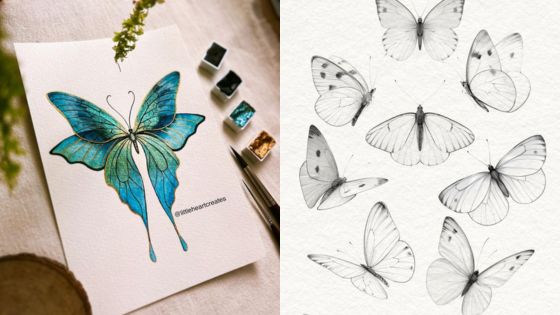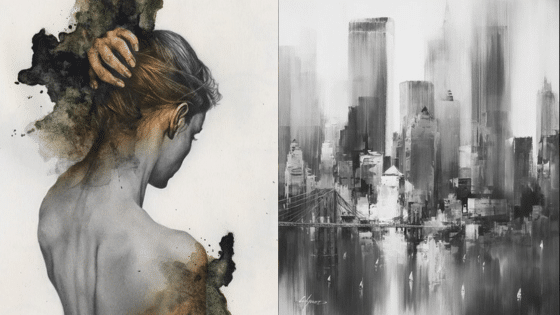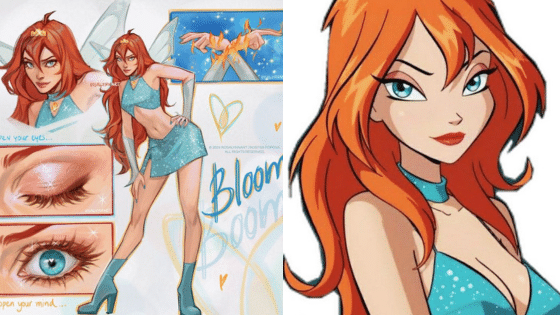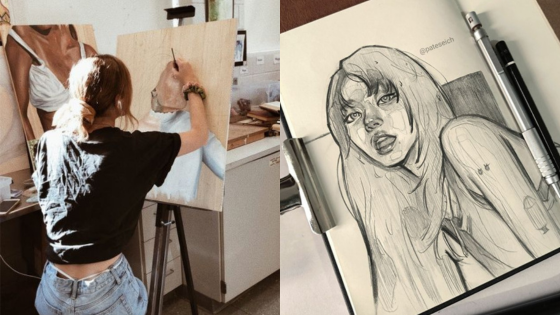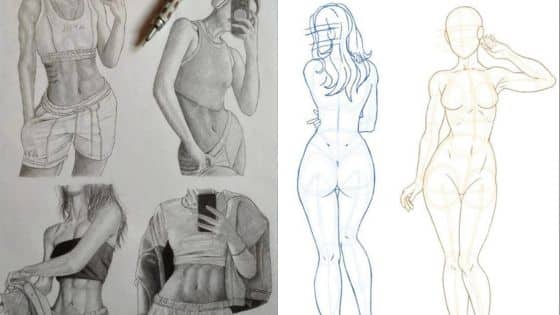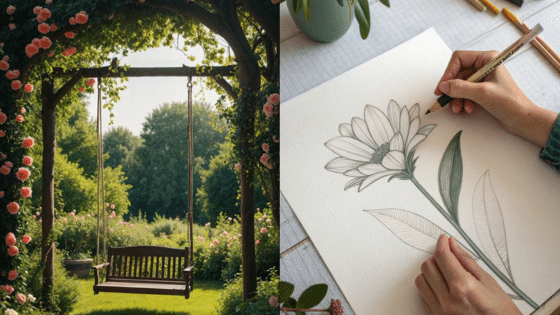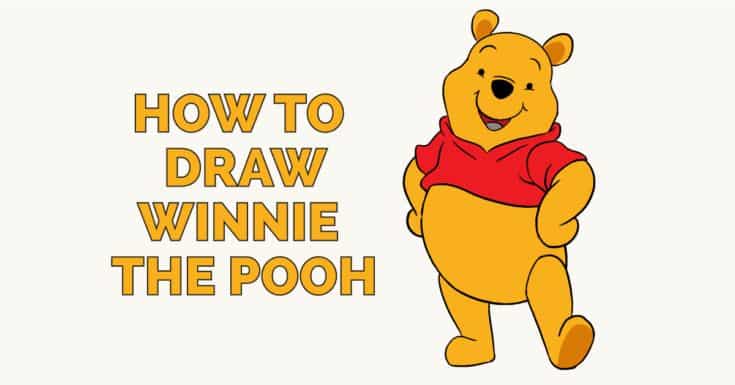
Winnie the Pooh is a beloved character that many enjoy drawing. Creating a simple and recognizable Winnie the Pooh drawing starts with understanding his basic shapes and features. This helps artists of all skill levels capture the charm of the character quickly.
Drawing Winnie the Pooh can be done with just a few materials, and following clear steps makes the process easier. Whether someone prefers pencil and paper or digital tools, the key is to focus on the character’s round face, small eyes, and friendly smile. These details bring Pooh to life in every drawing.
By paying attention to simple shading and color choices, the drawing becomes more lively and true to the original character. Exploring different styles and ideas can also make each Winnie the Pooh drawing unique and special.
Key Takeaways
- Start with basic shapes to form Winnie the Pooh’s head and body.
- Use simple tools and follow clear drawing steps.
- Adding shading and color brings more life to the drawing.
Essential Materials for Drawing Winnie the Pooh
Drawing Winnie the Pooh requires specific tools and surfaces to capture his simple but charming look. The right pens, pencils, and paper help create clean lines and gentle shapes. Adding color brings the character to life, but it’s important to pick supplies that work well together.
Recommended Drawing Tools
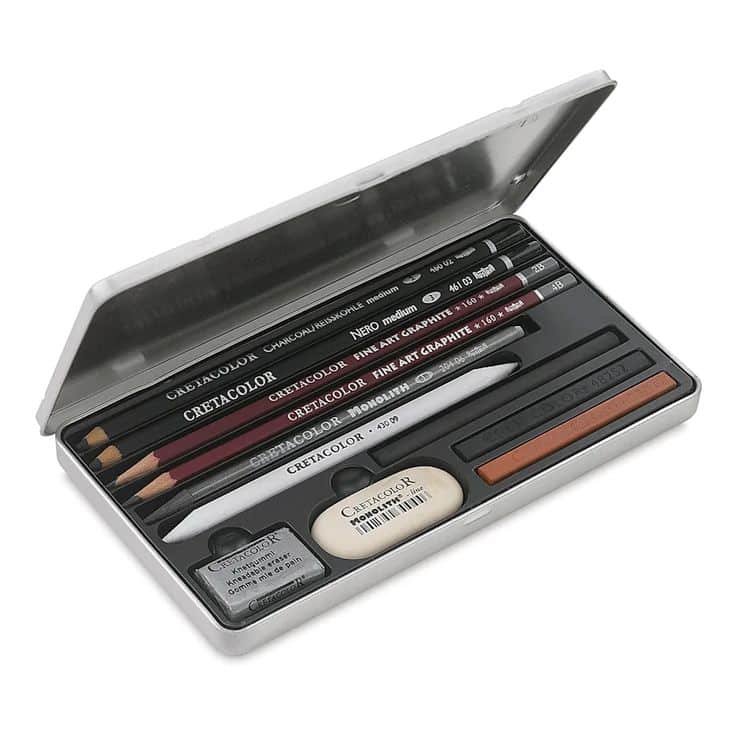
A set of graphite pencils with different hardness works best. Start with a 2B pencil for sketching Pooh’s basic shapes. A 4B or 6B pencil helps add darker lines and shading. Erasers are also needed—kneaded erasers are best for lightening areas without damage.
For final lines, fine-tip black ink pens are ideal. Sizes between 0.1 mm and 0.5 mm allow for detailed outlines. Mechanical pencils with 0.5 mm lead provide precision for small parts like Pooh’s eyes and nose.
Ideal Paper and Surfaces
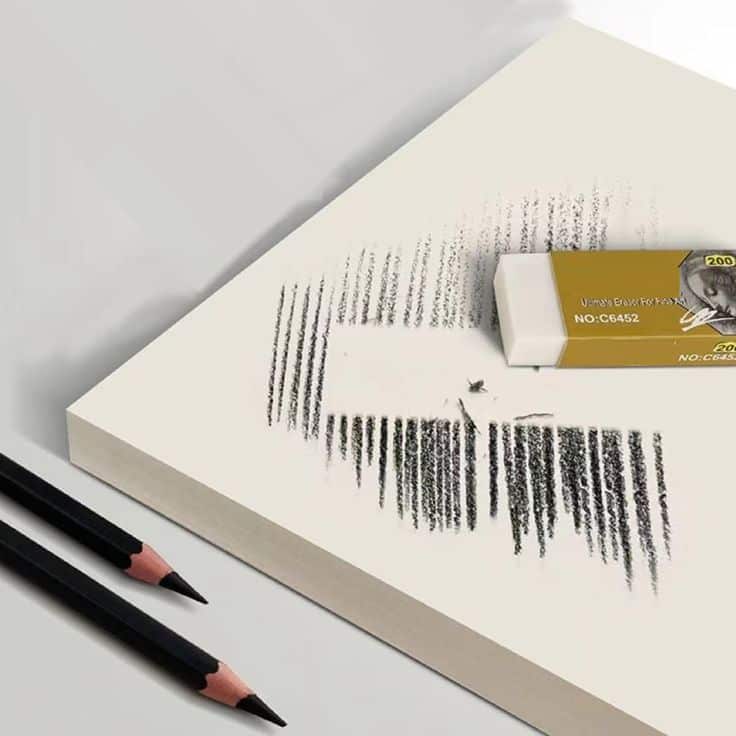
Smooth drawing paper around 90 to 120 gsm works well. This paper absorbs pencils and ink without bleeding or smudging. Bristol paper is a good choice because it’s thick and sturdy.
For practice, regular sketchbook paper is fine but avoid rough textures. Avoid thin or glossy papers because ink may smear easily. Using a drawing board keeps the paper stable for more control.
Optional Coloring Supplies
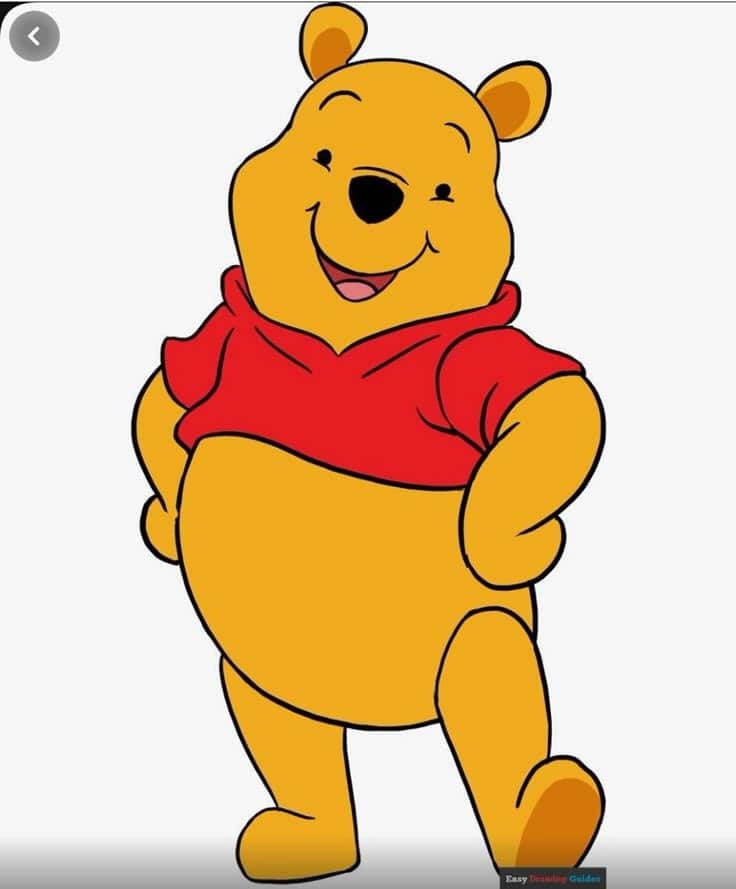
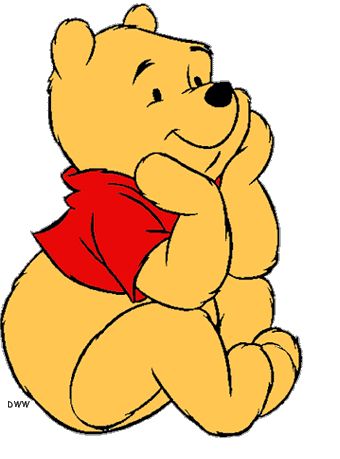
Colored pencils are the easiest choice to add Pooh’s soft yellow, red shirt, and brown lines. They offer good control and layering ability. Watercolor pencils can also be used but require a light touch with water to avoid bleeding.
Markers with fine tips provide bright colors but may bleed through thin paper. If using markers, heavier drawing paper is best to prevent damage. A set of basic colors like yellow, red, brown, and black covers Pooh’s palette.
Step-by-Step Guide to Drawing Winnie the Pooh
This guide helps create Winnie the Pooh by starting with simple shapes, then adding important facial features. It explains how to shape the body and limbs accurately and finally includes the small details that make Pooh recognizable.
Sketching Basic Shapes
Begin by drawing a large circle for Pooh’s head. Below it, sketch a wider oval for his body. Use light pencil strokes so changes are easy.
Add two small circles on top of the head circle for ears. Draw a horizontal line halfway through the head circle to guide the eyes’ placement. This helps keep the face balanced.
Next, mark where the arms and legs will go with short lines extending from the oval. Keep the shapes simple and round because Pooh’s design is soft and cuddly.
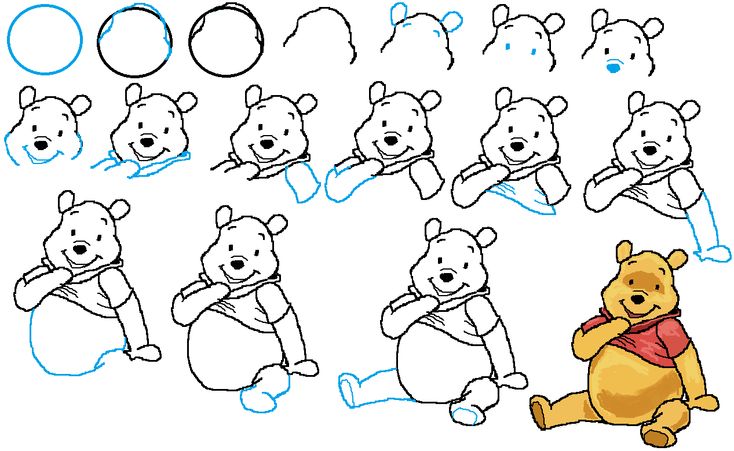
Defining Facial Features
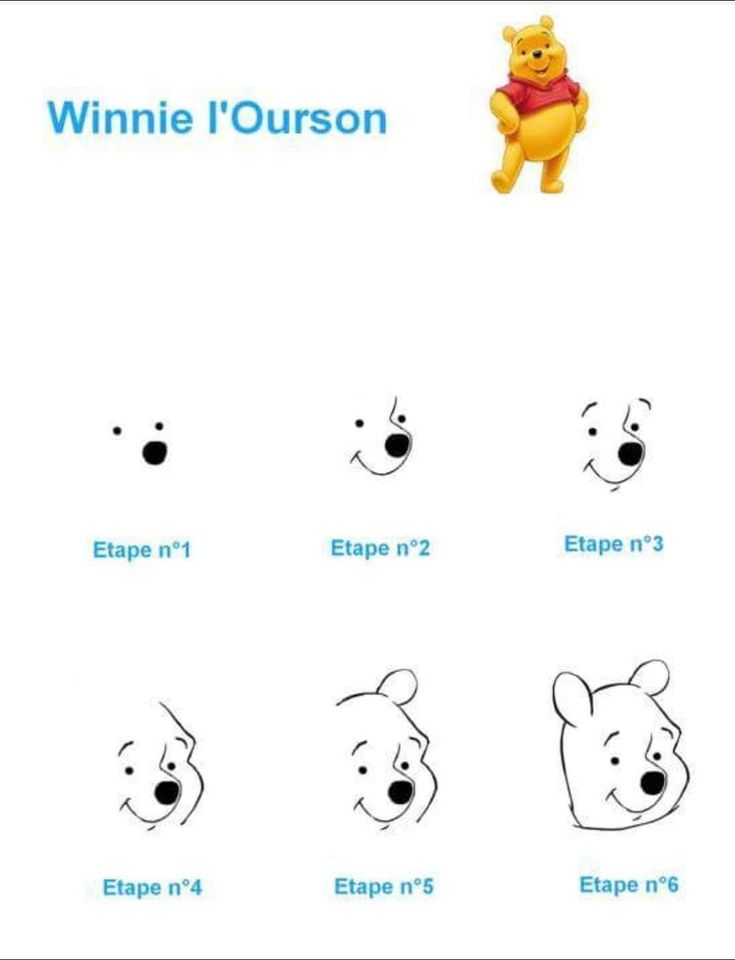
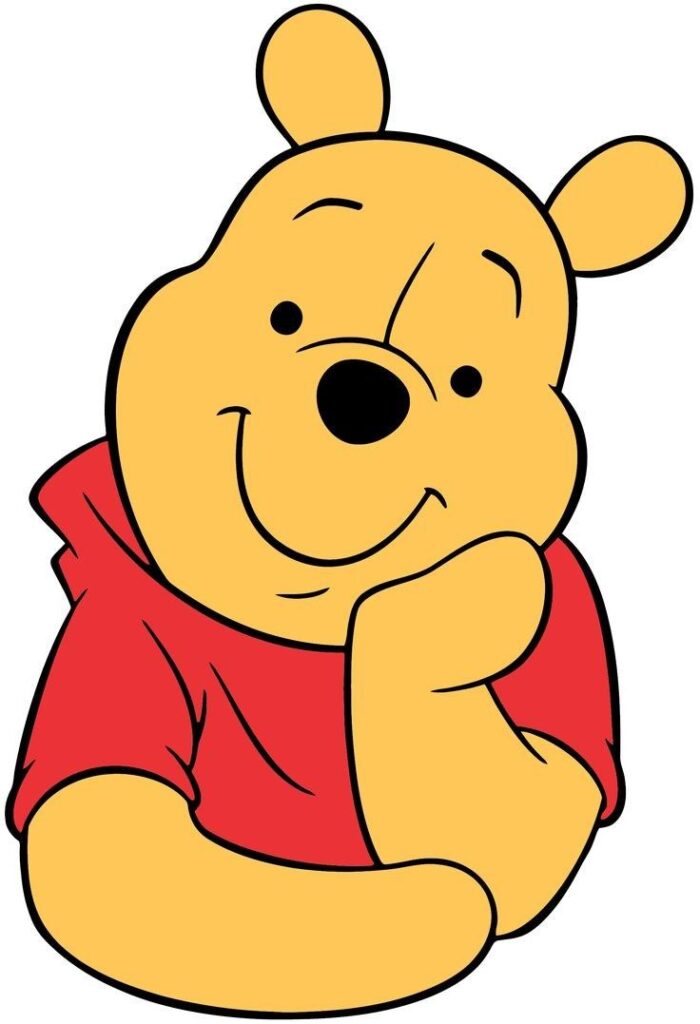
Start by drawing two small ovals on the horizontal guide for the eyes. Place them close together near the circle’s center for his friendly look.
Below the eyes, create a small curved “U” shape for the nose. Add a short line going down from the nose, then curve it into a smile. This is Pooh’s classic mouth.
Draw simple curved lines over the eyes for eyebrows. Keep them soft to match his gentle face. Add little circles inside the eyes to show pupils.
Drawing the Body and Limbs
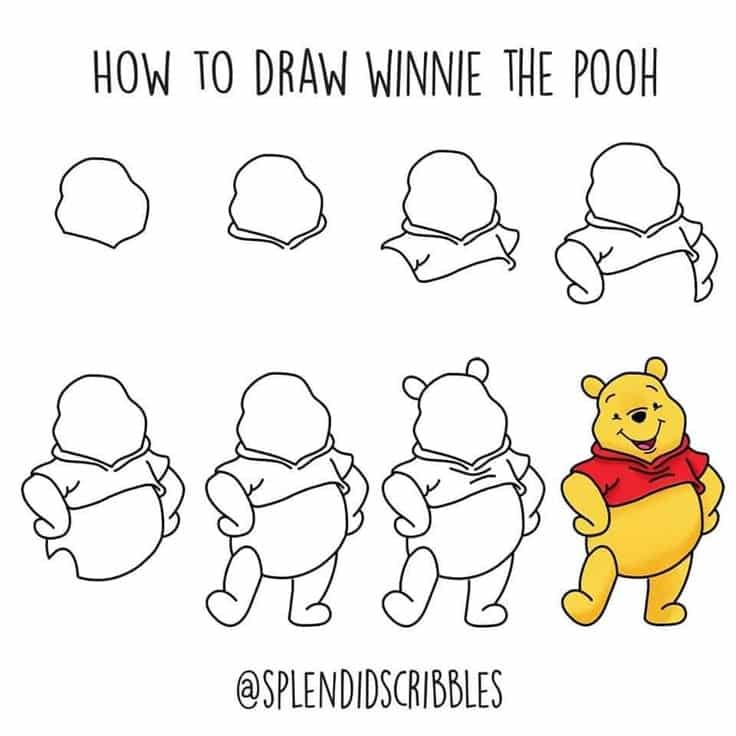
Refine the body shape by smoothing the oval and rounding the sides. Pooh’s body is thick and short, so keep the waist wide and not too tall.
Sketch the arms as rounded shapes on each side of the body. They should look soft, with simple, curved lines for fingers. Keep the arms short and a bit chubby.
For the legs, draw two stubby, rounded shapes at the bottom of the body. Add simple ovals at the end for feet, pointing slightly outward.
Adding Signature Details
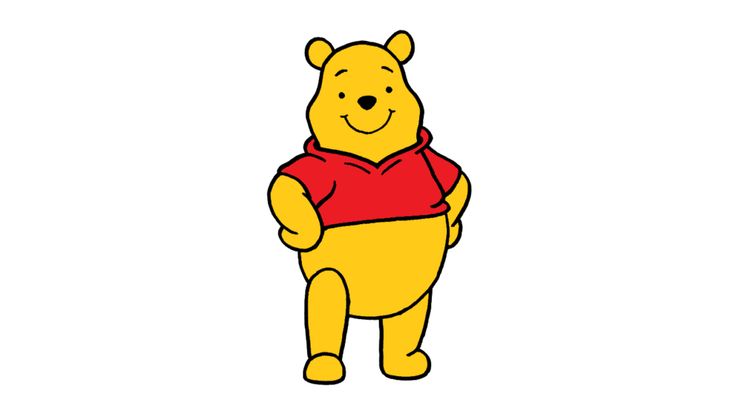
Add Pooh’s famous red shirt by drawing a simple neckline just below the head. Make the sleeves short and slightly loose.
Include small folds and curves in the shirt to suggest softness but keep details minimal. Pooh’s outfit is very plain, so don’t overdo this step.
Finally, erase extra sketch lines carefully. Darken the main lines to complete the drawing. Optionally, color Pooh’s fur light yellow and shirt red to finish the image.
Tips for Capturing Authentic Character Likeness
Capturing Winnie the Pooh accurately means focusing on key shapes and details. Attention to size relationships, facial expressions, and common pitfalls helps create a recognizable and true-to-character drawing.
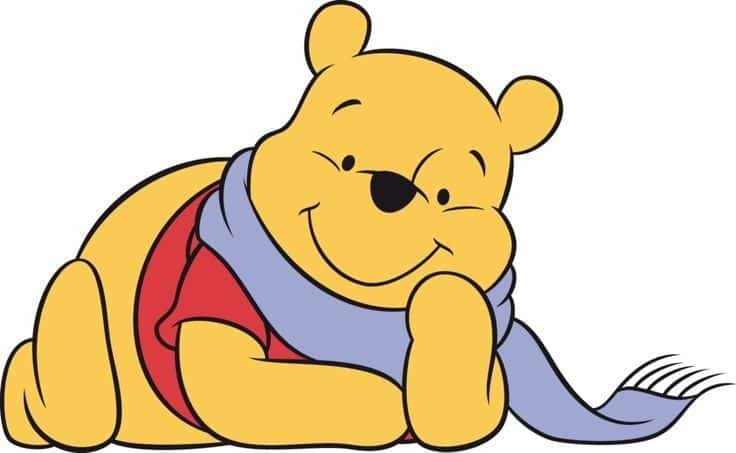
Understanding Proportions
Pooh’s body is round and soft, with a large head and shorter legs. The head should be about the same width as the body. His ears are small, rounded, and placed near the top of the head.
His eyes are small and close together. The nose is oval-shaped and sits just above the midline of the face. Keep the arms short and slightly chubby.
Maintaining these simple proportions ensures Pooh looks like the character from the original stories. Using light sketch lines to block out these shapes helps prevent errors before adding details.
Expressing Pooh’s Personality
Pooh’s personality is gentle, curious, and a bit slow-moving. His expressions need to reflect calmness and kindness. Soft, curved lines for his mouth and eyes are important.
Small changes in eyebrow angle or mouth shape can make him look worried, happy, or thoughtful. His stance is usually relaxed, with slightly slouched shoulders and open hands.
Adding these subtle clues brings Pooh to life. Avoid stiff or harsh lines as they change the friendly feel of the character.
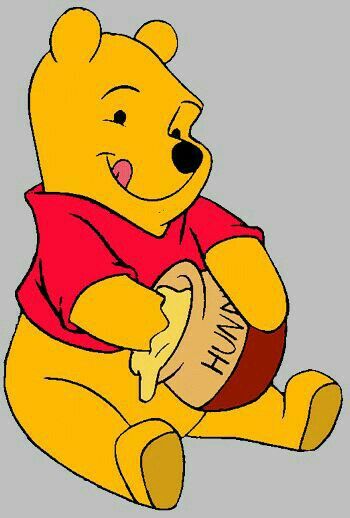
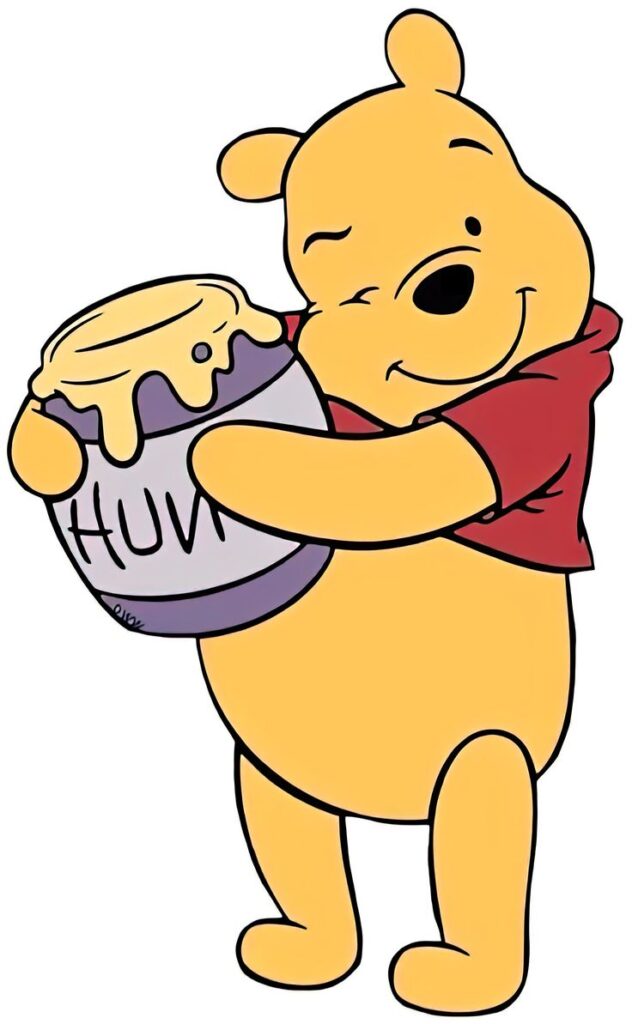
Common Mistakes to Avoid
One common mistake is making Pooh’s body too tall or thin, which loses his cuddly appearance. Overly sharp features or tiny eyes can make him look mean or unfamiliar.
Another error is misplacing the nose too low or too high on the face. This throws off his friendly look. Drawing the arms and legs too long or straight also breaks his soft and rounded style.
Avoid heavy outlines or excessive detail. Winnie the Pooh is simple and charming, so keep lines smooth and minimal to preserve his classic look.
Coloring and Shading Techniques for Winnie the Pooh
When coloring Winnie the Pooh, focus on using the right colors, blending them smoothly, and adding highlights to create depth. These steps help bring the character to life while keeping his classic look.
Choosing the Right Colors
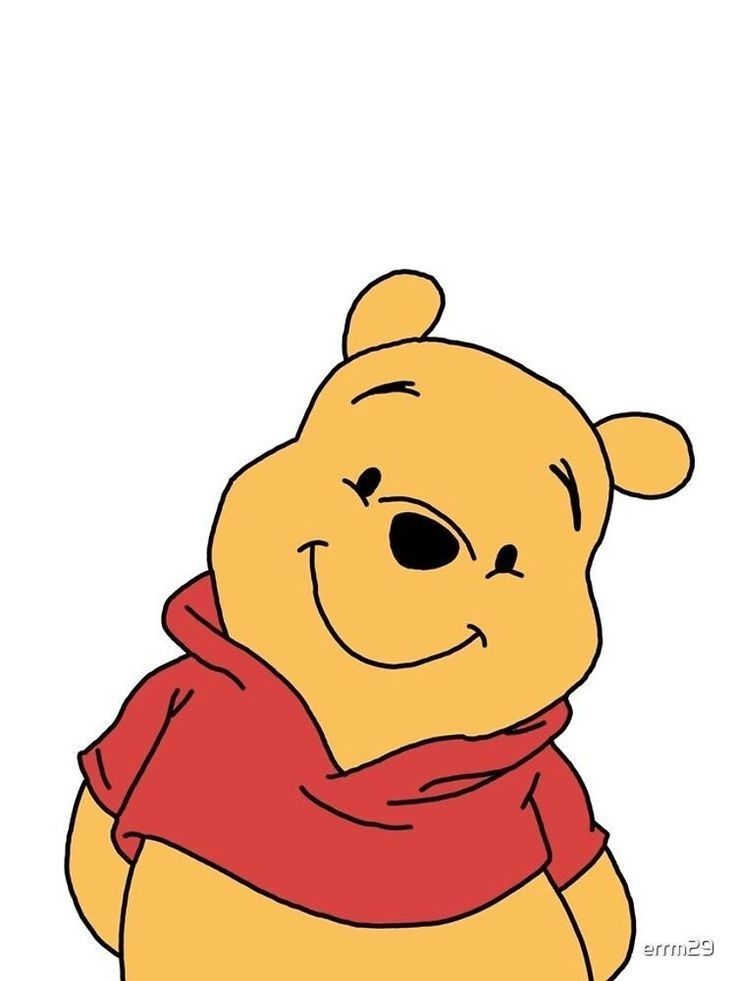
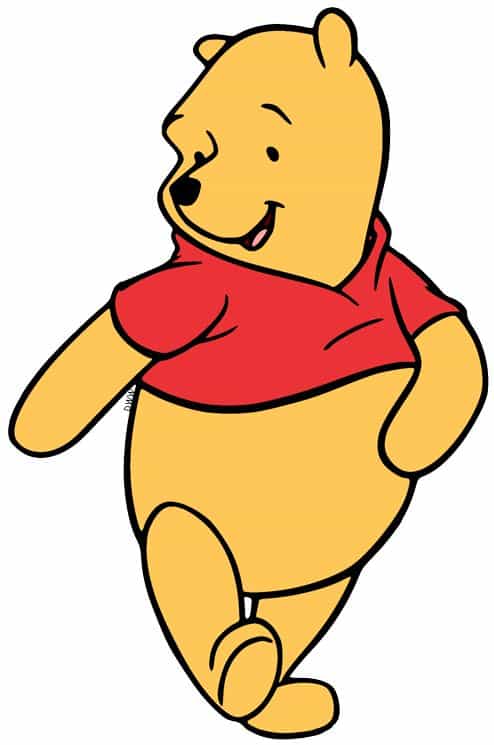
Winnie the Pooh is known for his soft yellow fur and red shirt. Use a warm, light yellow for his body to keep it gentle and friendly. Avoid bright or neon yellows, which can look unnatural.
For the shirt, select a bright but slightly muted red. This keeps the color true to the original design without looking too harsh. Brown or black can be used for the nose, eyes, and eyebrows.
Use colored pencils or markers that offer good coverage and smooth texture. This prevents unwanted graininess and allows for easier blending later.
Blending and Layering
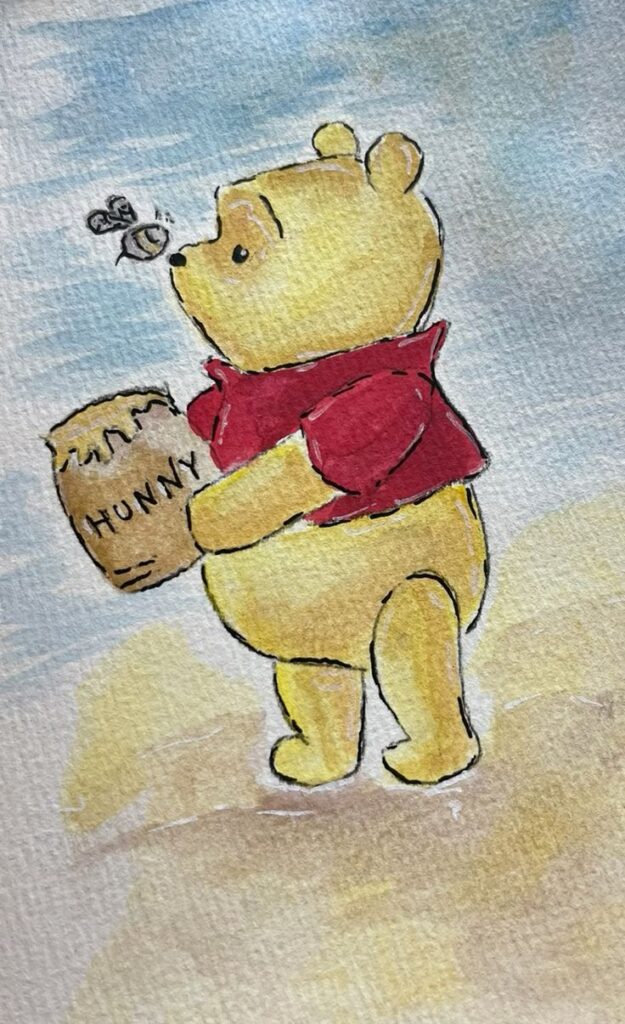
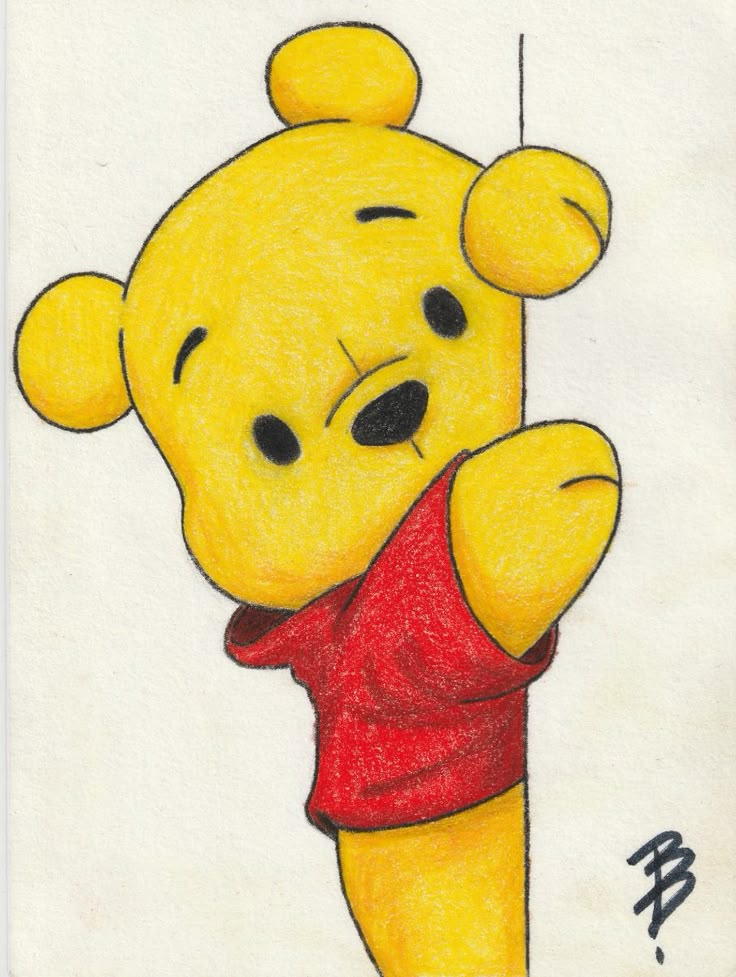
Blending colors makes the drawing smooth and natural. Start by applying light layers of color instead of heavy strokes. This helps control the shading and prevents color buildup.
Layer the yellow fur with slightly darker shades on the edges and lighter tones on the flat areas. Layer the red shirt similarly by adding shadows under folds or where the shirt curves around the body.
Use circular motions or light strokes to blend colors. This avoids harsh lines and gives Pooh a soft, plush look. Blending tools, like blending stumps or cotton swabs, can help mix colors without losing control.
Highlighting for Dimension
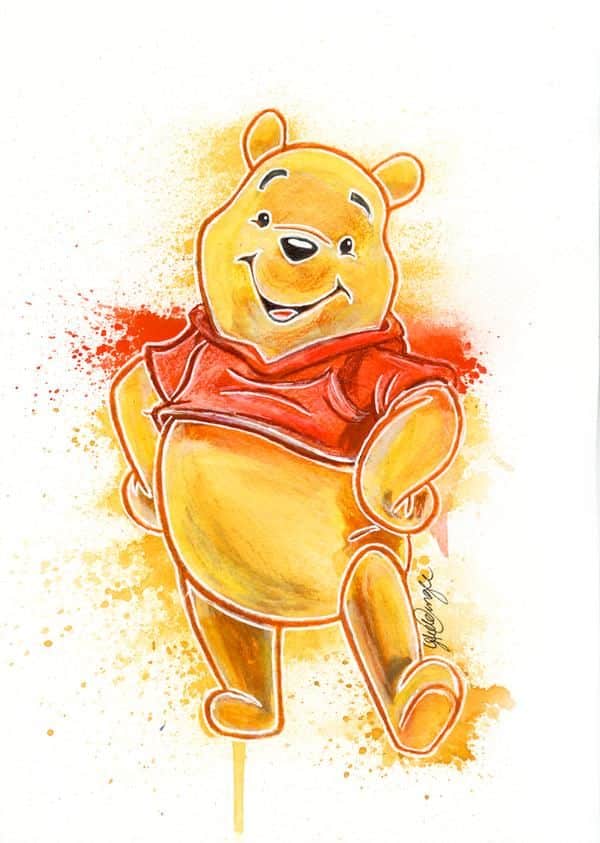
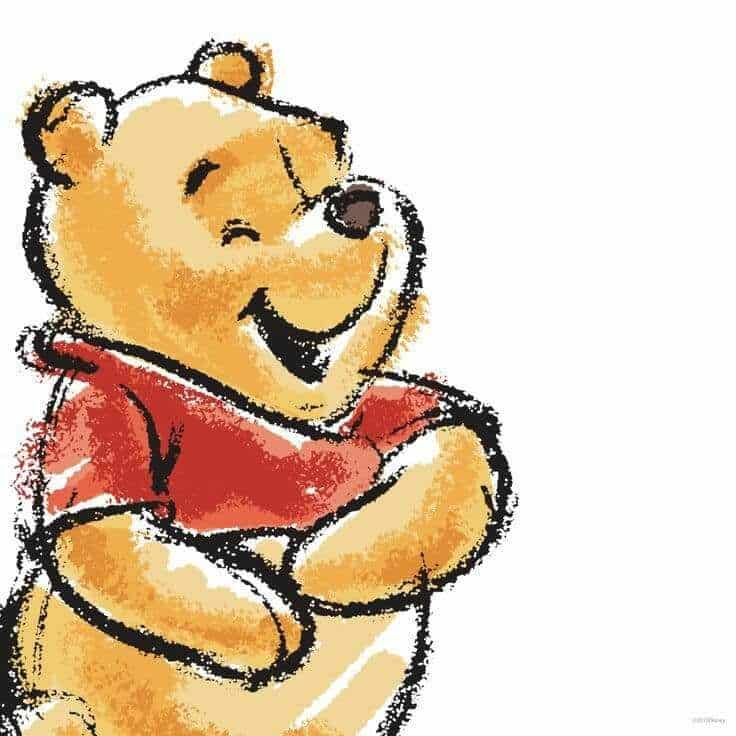
Highlighting adds a 3D feel to the character. Focus on areas where light naturally hits, such as the top of Pooh’s head, the nose bridge, and the upper parts of his arms.
Use a white pencil or a very light yellow to add subtle glows. Avoid overdoing it; the highlights should look soft and natural.
Shadows should be opposite the highlight areas, under the arms, or beneath the chin. This contrast creates shape and depth without making Pooh look too harsh or unrealistic.
Digital vs. Traditional Winnie the Pooh Drawing
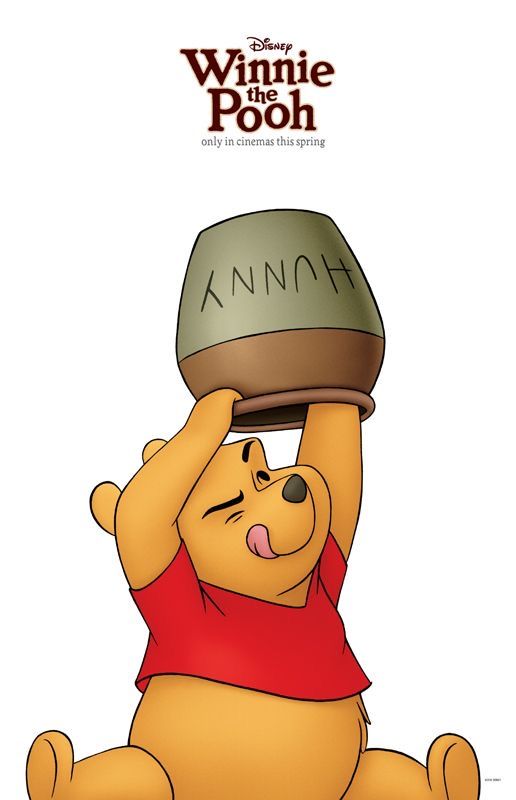
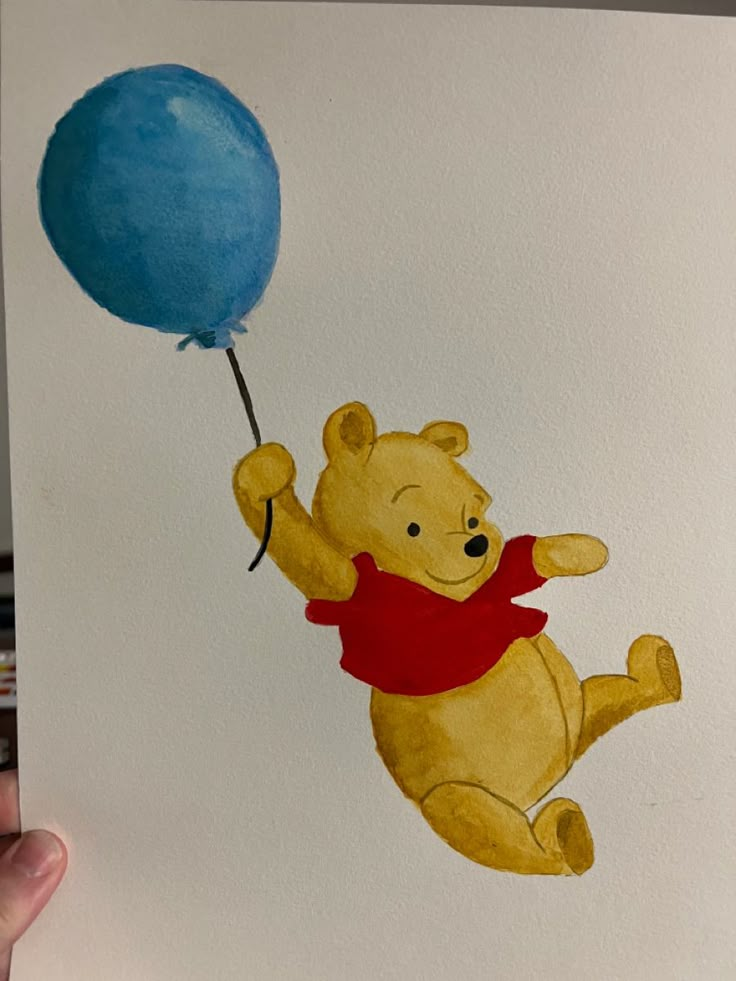
Digital drawing uses software to create images on a screen. Artists can choose colors quickly and erase mistakes without damaging the paper. It allows for easy editing and zooming in to add fine details to Winnie the Pooh.
Traditional drawing uses pencils, pens, or paint on paper or canvas. This method gives a unique texture and feel to the artwork. Many artists enjoy the hands-on process of drawing Pooh with real tools.
| Aspect | Digital Drawing | Traditional Drawing |
|---|---|---|
| Tools | Software, tablet, stylus | Pencils, pens, brushes |
| Editing | Easy to undo and change colors | Must use eraser; harder to fix |
| Texture | Smooth, can be flat | Shows paper or brush texture |
| Portability | Digital files, easy to share | Physical artwork, must be scanned |
Digital art often looks cleaner and can be shared online instantly. Traditional art can feel more personal because of the artist’s hand movements.
Both styles can depict Winnie the Pooh well. The choice depends on what the artist prefers and the effect they want to achieve.
Creative Winnie the Pooh Drawing Ideas
Drawing Winnie the Pooh can be fun when adding different themes and characters. Using seasons or including friends from the Hundred Acre Wood makes the drawing more lively and interesting. These ideas help bring Pooh’s world to life with simple but effective touches.
Seasonal Themes
Seasonal themes add color and mood to Pooh drawings. For example, drawing Pooh with a winter scarf and snowflakes sets a cozy, cold scene. In the spring, flowers and bees can be included to show growth and activity. Summer drawings might have Pooh enjoying honey under a bright sun or at a picnic.
Using fall colors like orange and brown can give a warm feel. Drawing Pooh with falling leaves or pumpkin patches fits this season well. Changing Pooh’s outfit or the background helps show the time of year clearly.
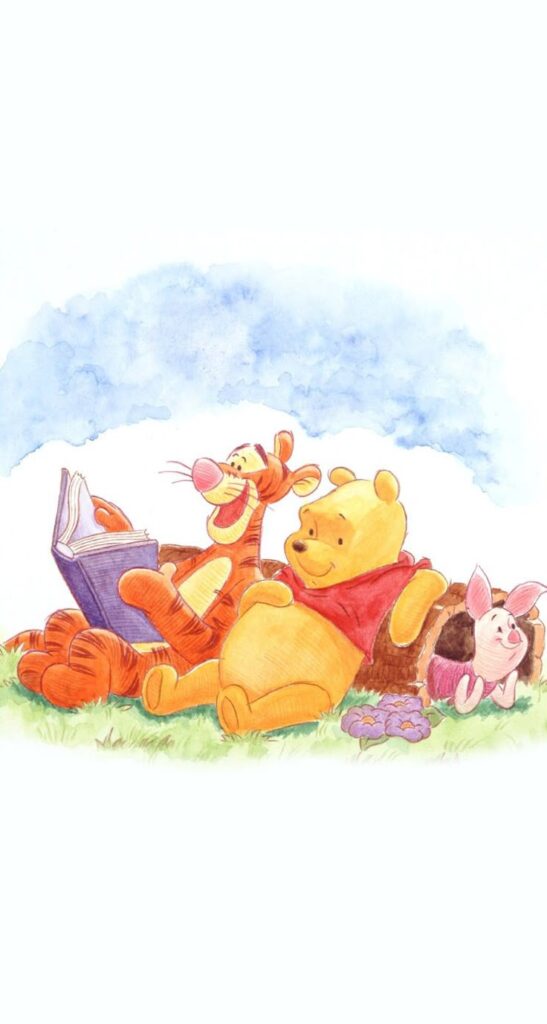
Including Friends from the Hundred Acre Wood
Adding Pooh’s friends makes the drawing more complete. Characters like Piglet, Tigger, and Eeyore each have unique looks and personalities. Piglet is small and shy, Tigger is bouncy and cheerful, and Eeyore looks gloomy but gentle.
Including them in different poses or activities makes the scene richer. For instance, Pooh and Piglet could be sharing honey, or Tigger might be jumping nearby. Showing the group together also captures the feeling of friendship and adventure.
Displaying and Sharing Your Winnie the Pooh Artwork
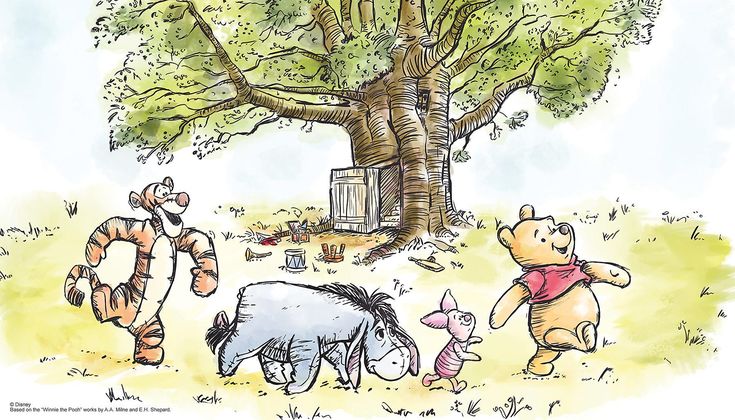
He can showcase his Winnie the Pooh drawing by framing it. A simple frame protects the drawing and makes it look neat. Choosing a frame that matches the colors in the drawing helps it stand out.
They may also use a digital platform to share the artwork. Websites like Instagram or Pinterest are good places. Posting clear photos of the drawing allows others to see and comment on it.
Sharing art with family and friends is another option. He can gift the artwork or display it at home. This creates a personal connection and appreciation for the effort made.
Here are some tips for sharing artwork online:
| Tip | Reason |
|---|---|
| Use good lighting | Shows true colors and details |
| Provide a simple title | Helps viewers understand the theme |
| Add hashtags | Makes art easier to find on platforms |
They should avoid posting low-quality images as it hides details. Consistent sharing can help build an audience that enjoys Winnie the Pooh art. Displaying work proudly encourages more practice and creativity.
- 0shares
- Facebook0
- Pinterest0
- Twitter0
- Reddit0








